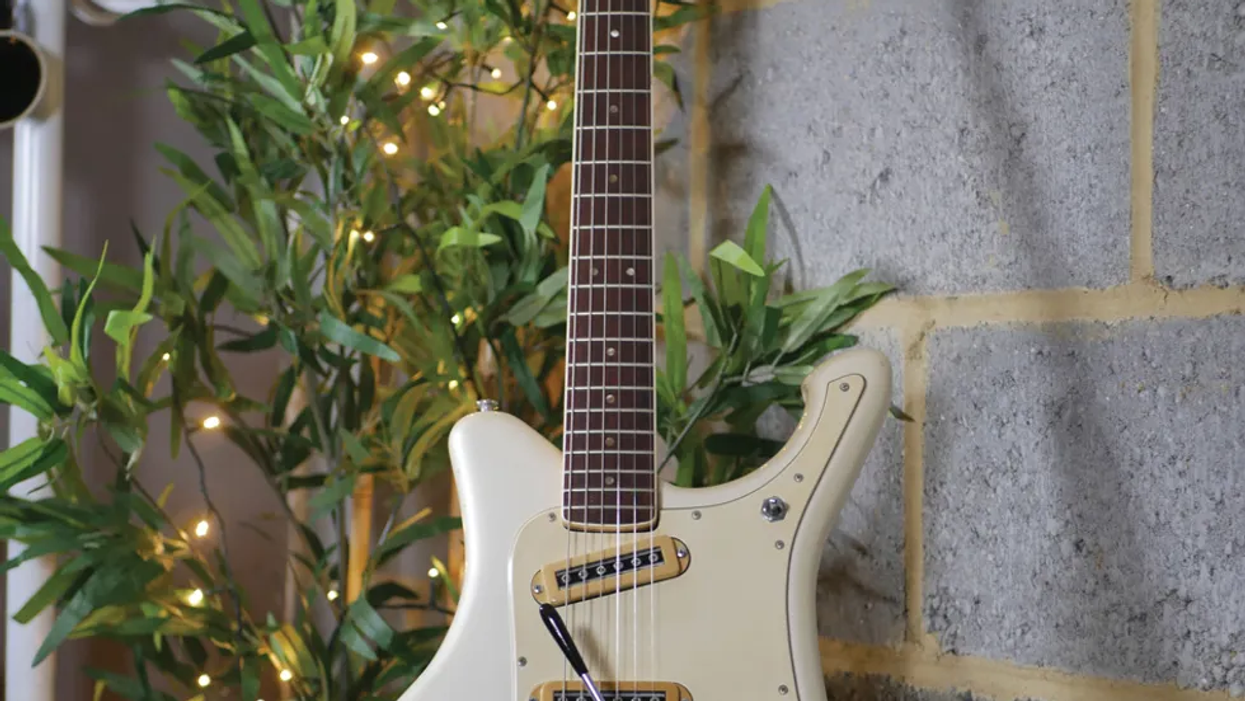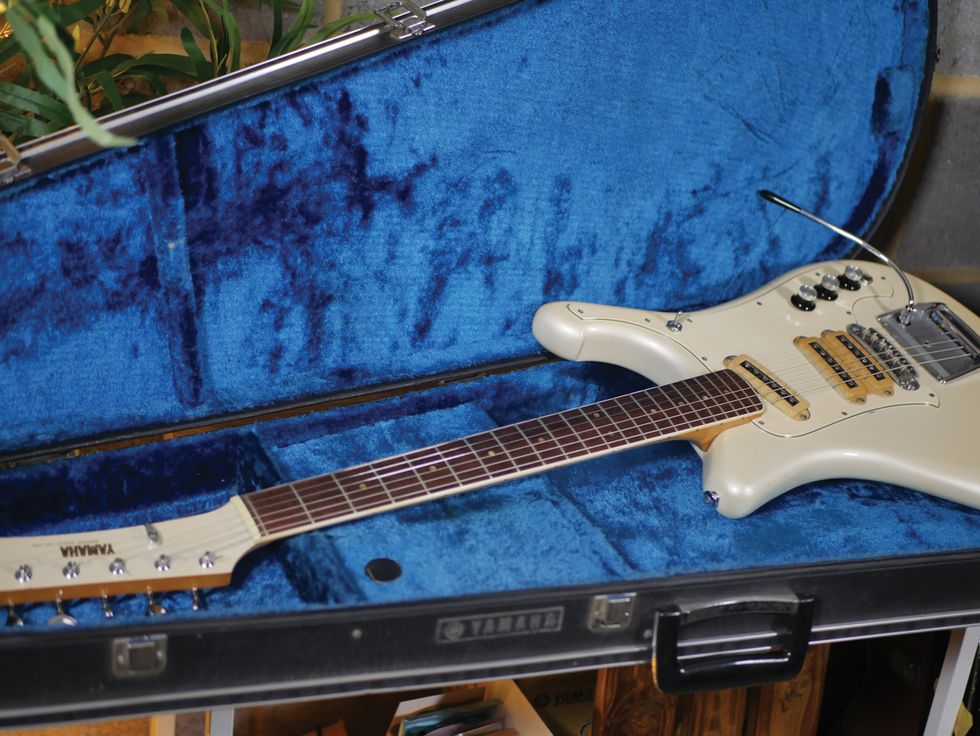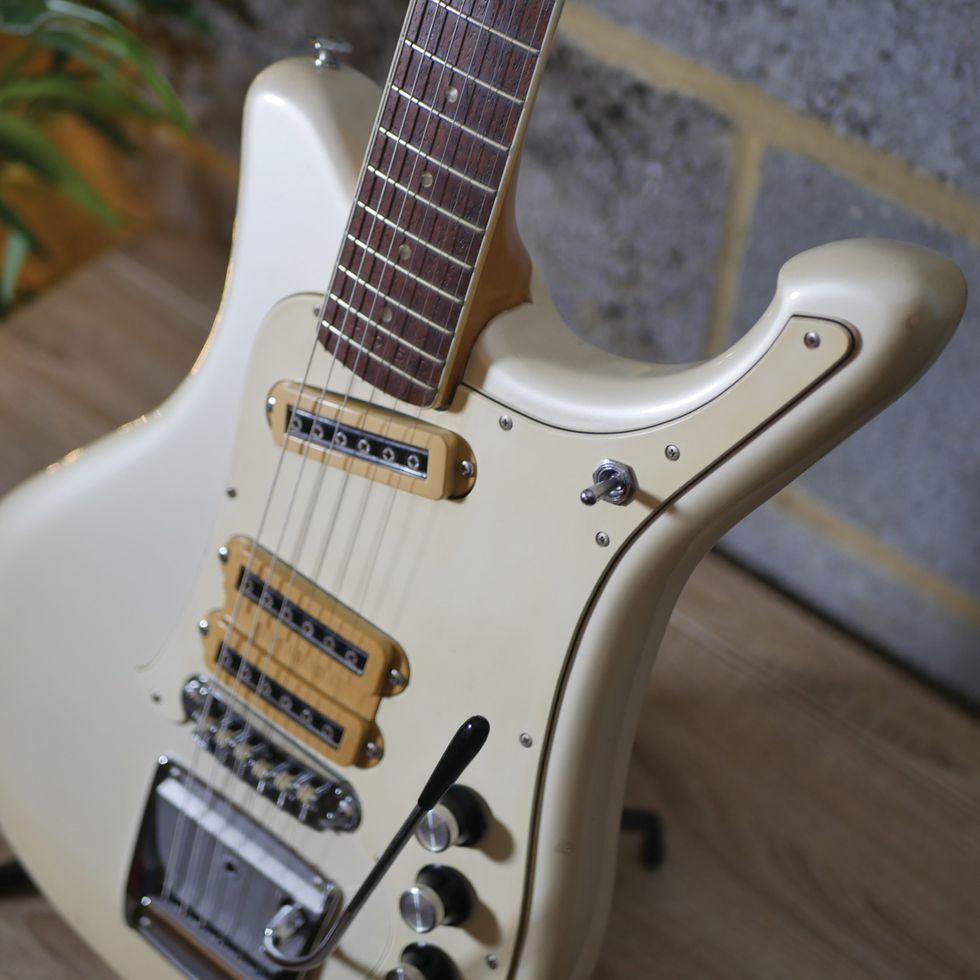As most readers likely already know, there are many strange and wonderful Japan-made guitars from the 1960s lurking in the lost corners of the vintage marketplace. PG's Wizard of Odd column covers many of them. Most of these instruments were mass produced as export commodities and showed up all over the world with a dizzying variety of different make and model names. Brands like Teisco, Conrad, Norma, and others were used as stand-ins for many low-end, made-in-Japan (MIJ) instruments of this era—typically denoting a guitar or bass that looks cool, but, more often than not, is lacking in terms of playability and tone.
Today's Vintage Vault pick is something a little different. Built and developed primarily for the surf-rock-obsessed Japanese guitar scene of the '60s, the Yamaha SG line came to include a range of guitars and basses that carried all the pizzazz of anything being built in this period, but with a bit better overall quality than your typical vintage MIJ fare. This reputation for playability and tone, combined with a unique, futuristic flair, has placed the top-shelf Yamaha SG models among the most collectible of all vintage guitars built in Japan.
Photo 2 — The neck of the SG-5, which had its original production run from 1966 to 1971, has a rosewood fretboard, a zero-fret nut, a 24 3/4" scale length, and 22 frets.
Unfortunately, like many non-U.S. guitars of this era, there's not a lot on record about the origins and production of these instruments. What we do know is that, in 1966, Yamaha introduced a series of new solidbody guitars and basses, which included the more conventional Fender-like SG-2 along with our subject today, the SG-5. The SG-5's body shape—which is usually called “the Flying Samurai"—stood out with its Mosrite-esque lower curve and exaggerated treble horn (predictive, somewhat, of the later Ibanez Iceman), as well as its idiosyncratic electronics and elongated headstock. This initial model was later joined by a handful of variants including 12-string and bass offshoots, and, eventually, by the even more eye-catching SG-2C and SG-3C, both often called the “Flying Banana." Per some sources, the Yamaha team consulted with surf guitarist Takeshi Terauchi in the development of the design. Terauchi was known for playing Mosrites, and there is an unmissable Mosrite influence on the Flying Samurai models.
Today's featured instrument is an SG-5 from 1968, listed on Reverb by Harlequin Guitar Club of Angmering, in the south of England. It carries your typical signs of use for a guitar of its age but is in very good condition all around and includes all original components and the original case.
Photo 3 — A close-up look at the guitar's face displays the 3-way toggle, the distinctive Yamaha vibrato bridge, the tone, volume, and mix dials, and the three single-coils—with the bridge and near-center pickups mounted together on the same plastic frame for ease of installation at the factory.
While there are a handful of variations on the Flying Samurai design, with different pickup configurations and finishes, prices on these guitars are typically set by the overall condition rather than by the slight differences between each individual model. Prices range from $600 to $2,000 and up. This white SG-5 has three single-coil pickups and an early, chrome Yamaha vibrato tailpiece, plus a Tune-o-matic bridge. It has a 3-way pickup selector switch with a blend control, plus controls for tone and volume.
The Yamaha SG line made it to the very early 1970s, when the whole Japanese guitar industry shifted its focus toward closer copies of American models. And while quite rare today, the decidedly '60s vibe of these guitars continues to earn fans among retro-psych guitarists such as Stu Mackenzie of King Gizzard & the Lizard Wizard, in addition to many Japanese guitarists. including Miki Furukawa. Yamaha has also reissued this body shape in more recent years, and one such guitar even shows up in the hands of the Doctor in a Peter Capaldi-era episode of Doctor Who. How's that for futuristic credentials?










![Rig Rundown: Russian Circles’ Mike Sullivan [2025]](https://www.premierguitar.com/media-library/youtube.jpg?id=62303631&width=1245&height=700&quality=70&coordinates=0%2C0%2C0%2C0)

















